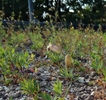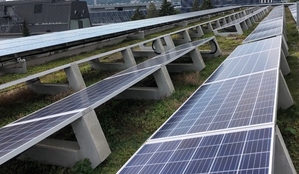Department Urban Water Management
Multi-functional green roofs
Improving the environmental benefits of green roofs through system focused experiments and modeling
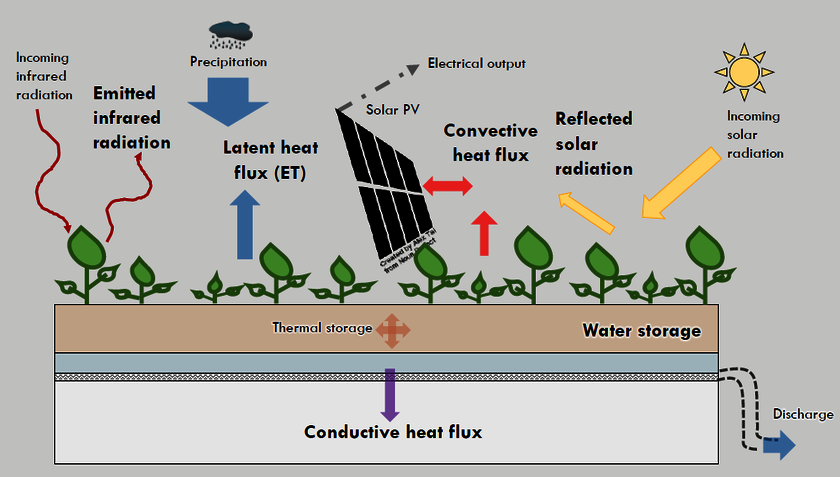
Summary
From urban flooding to urban heat island effect, cities are faced with a growing list of environmental challenges that require innovative and holistic approaches. One such approach is multi-functional green roofs, which combine vegetated roofs with solar photovoltaic (PV) arrays. This approach is promising because PV cells provide shelter to the plants, while the vegetation cools the panels, and can increase their efficiency to generate electricity. Green roofs also have the potential to reduce urban drainage runoff, decrease the temperature of cities, save energy in buildings, and encourage biodiversity. However, they are rarely designed to achieve these multiple benefits and, as a result, there is a lack of understanding of how different design choices contribute to each environmental objective.
The multi-functional green roofs project examines trade-offs and synergies in green roof design parameters that arise when maximizing co-benefits of green roofs. In line with this goal, we are currently running a field experiment to evaluate the effect of different vegetation types on multiple environmental benefits from green roofs. Future work will use experimental data (online since July 2019) in conjunction with simulation models to quantify the effects of different plant species on the multiple co-benefits that can be achieved by a green roof.
Data collected with experimental site
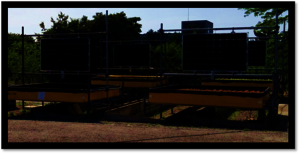
Since July 2019, we have been collecting the following data from four small scale green roofs (2.5 x 3 m) located at the ETH Honggerberg campus in Zurich, Switzerland. These data are remotely collected every 5 minutes and stored automatically in an online repository (data pool).
| Data type | Sensor Type | Quantity |
|---|---|---|
| Timing and volume of discharge | Tipping bucket flow gauge | 4 |
| Soil moisture and temperature | TEROS 11 temperature / moisture sensor | 8 |
| Plant canopy temperature and humidity | Sensirion temperature humidity sensor | 4 |
| Long wave radiation from plant canopy | Pyrgeometer | 1 |
| Temperature of solar panel surface | PT1000 platimum resistance thermometer | 16 |
| Electrical output of solar panels | DC/AC converter | 4 |
| Rainfall data | OttPluvio weighing rain gauge | 1 |
| Climate variables (temperature, solar radiation, wind speed, humidity, air temperature) | Lufft compact weather station | 1 |
Field experiment overview
Based on a cross-disciplinary review of the literature and interviews with experts, we found that vegetation type can have a considerable effect on the environmental benefits achieved by the green roof. However, it is still unclear how different vegetation properties influence the green roof as a system, including the co-benefits associated with:
- Minimizing peak discharge,
- Abating heat island effect, and
- Increasing the efficiency of rooftop solar panels
To improve our understanding of the system, we are evaluating three different types of vegetation to determine if the reflectivity (albedo) or rate of evapotranspiration can influence the co-benefits achieved by a green roof. The species, planted in June 2019, include:
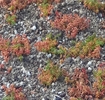
Sedum album
A mat-forming succulent species, selected as a “baseline” species because it is one of the most commonly used plant species on green roofs. Sedums require little maintenance and are drought resistant; however, these species have been shown to retain nearly the same amount of water as bare soil.
Silene vulgaris
A tall, flowering plant native to Switzerland, selected because plants with larger diameter, shoots, and root biomass, have been found to reduce more runoff than smaller species. The genus, Silene, has high runoff retention and high ET, yet prefers dry soil typical of green roofs.
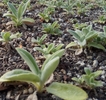
Stachys byzantia
A ground cover with hairy, silvery leaves, selected because it has been shown to lower surface and air temperature when compared to Sedums, most likely due to its silvery color that increases albedo and reflects radiation back to the atmosphere. This plant has not yet been compared to species with high ET.
Putting plants under solar panels – Why do it?
Due to their ability to produce distributed, renewable energy, solar photovoltaic (PV) panels play an important role in energy security and mitigation of climate change. One of the drawbacks of this technology is, however, their low efficiency to convert energy in sunlight to electricity. Most standard PV cells convert 20 to 30% of solar energy to electricity and as a result, even small efficiency gains could considerably improve the amount of energy produced from solar cells.
Solar panel efficiency is dependent on temperature and the amount of sunlight intercepted by the panels. Maintaining panels at stable and cool temperatures can improve their efficiency. Another way to improve efficiency is to reflect short-wave energy back onto the panels from a light-colored ground surface.
Green roofs have the potential to improve PV panel efficiency through both of these means. Vegetation cools the air under the solar panels, reducing the amount of (convective) heat absorbed by the solar panels. Silver or white plants species used on a green roof could also reflect solar radiation back onto solar panels.
Bi-facial solar panels
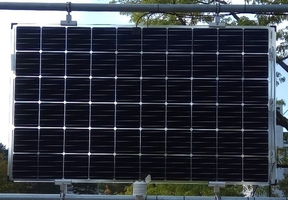
Bi-facial solar panels are vertical solar panels that can absorb solar energy from both sides. They are emerging as a complement to angled solar panels because they provide a stable output of electricity throughout the day, rather than a peak supply at mid-day. Due to their vertical angle, bi-facial panels also have a higher potential to absorb reflected solar energy from the ground surface. For these reasons, bi-facial panels are used in this project instead of flat panels.
Sub-projects and modeling efforts
An overarching goal of this project is to model the interaction between a green roof and rooftop PV system. This joint model will allow for exploration of scenarios that could alter the temperature of the roof, the output of the panels, and the runoff retained by the green roof. Individual models are being developed before coupling them into a comprehensive roof top model. Three sub-projects are ongoing or planned for this purpose:
1. Evaluating potential efficiency gains of solar panels placed on vegetated roofs (M.S. Thesis)
In this project, the System Advisor Model (SAM) will be used to explore the range of temperature and albedo changes that could alter the solar panel efficiency.
2. Coupling energy and water balance in a green roof through evapotranspiration
With novel adjustments to the Penman-Monteith evapotranspiration equation, this project models the influence of changes in vegetation type (surface resistance) on the green roof energy and water balance using experimental data.
3. Establishing a comprehensive multi-functional green roof model
Using a python wrapper, this project will combine the previous model into an open-source rooftop model, available to test scenarios of current and future climate and evaluate total net benefits of a multi-functional green roof.
Thank you to the following for help and support
Dieter Ramseier (ETHZ, Dept. of Environmental Systems Science)
Michael Arnold (ETHZ, Institute of Environmental Engineering)
Walter Grob (Solvo Plus)
Andreas Dreisiebner (solar spar)
Giel Sniedt (Nophadrain)
Reinhard Bischoff and others from Decent Lab
Gionata Borotti and others from AZ ELEKTRO AG
Suntechnics
Christoph Kaufmann (Kaufmann, Spenglerei + Sanitär AG )

